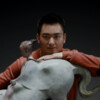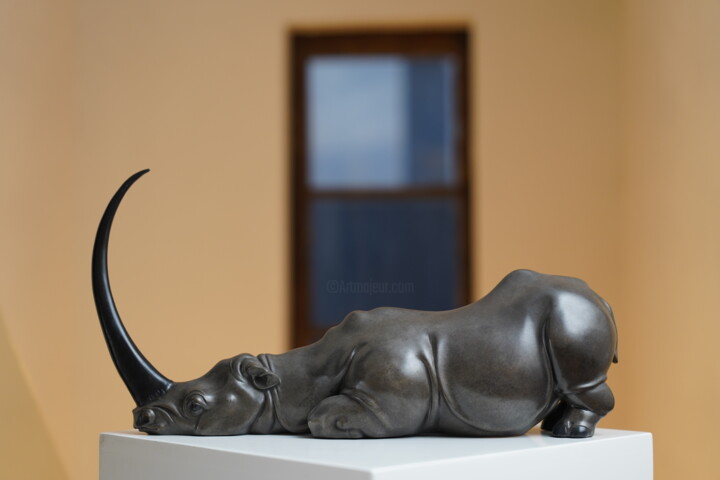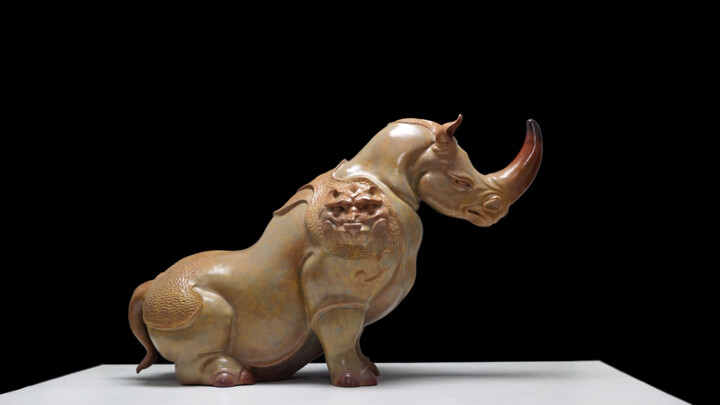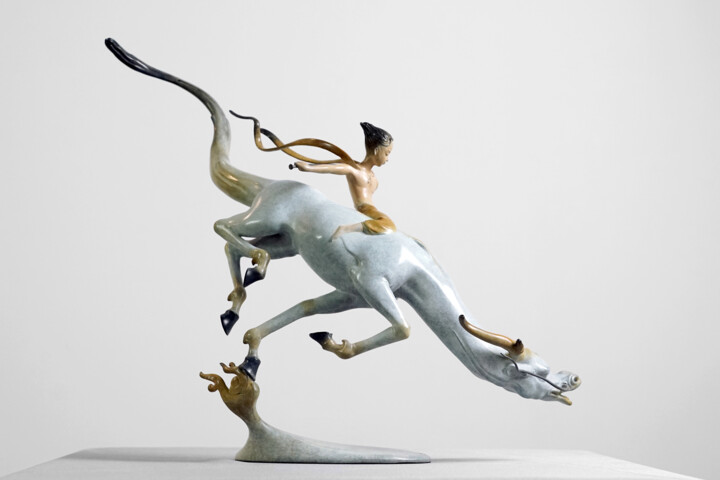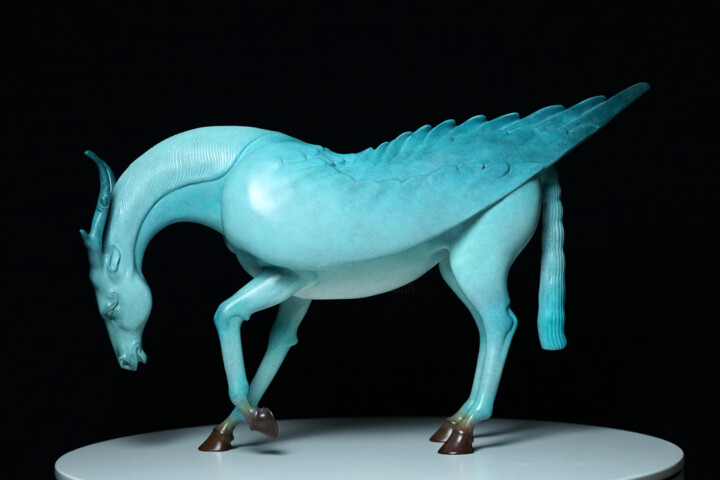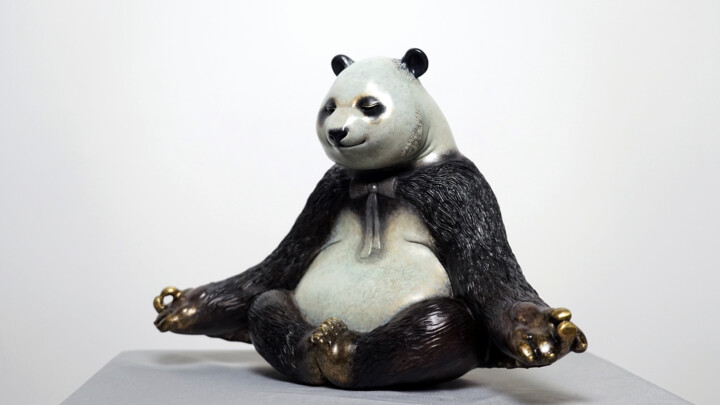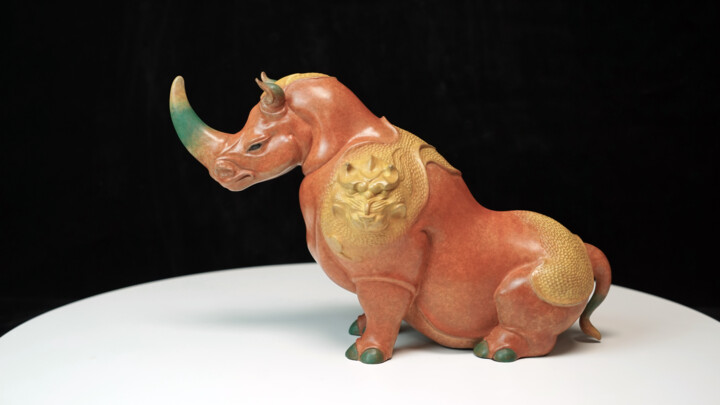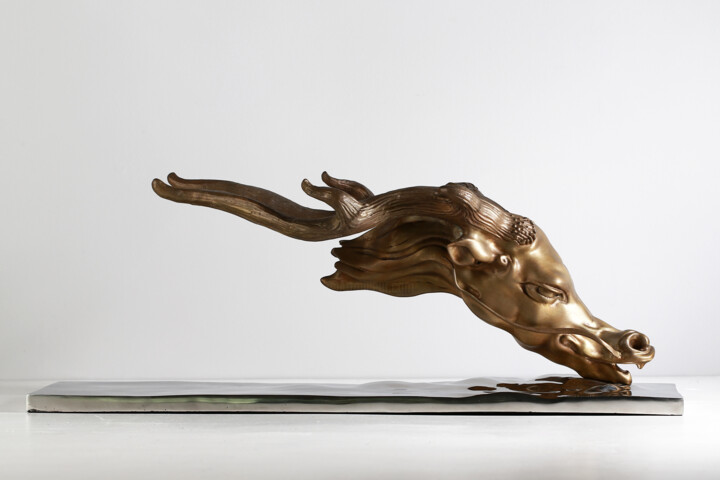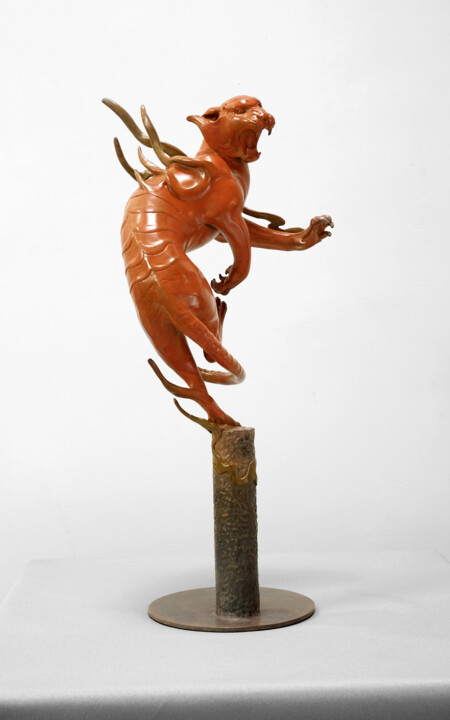What inspired you to create art and become an artist? (Events, feelings, experiences ......)
I have always believed that love is a prerequisite for creating art, and that the resulting income to satisfy one's life and creativity is a requirement for becoming an artist.
When I was a child I was very fond of ancient Chinese calligraphy and tried to practice it repeatedly, which was my initial introduction to art. Later on, I transitioned from calligraphy to painting, and spent almost all of my time after school on painting until I was exposed to a systematic art education and discovered that I had a talent for sculpting, and that painting was a good foundation for me to build on. Once my sculptures earned me my first money, I had the confidence to become an artist.
What is your artistic background and what are the techniques and subjects you have tried so far?
My artistic background is inspired by traditional Chinese art, my formal training is completely Western, and I have slowly learned to blend the best of both.
So far I have experimented with the techniques of Western classical sculpture, the linear aesthetics of Chinese painting and classical sculpture, and have begun to incorporate contemporary design methods to support my artwork. The themes involve myth, reality and the surreal.
What are the three aspects that make your work different from other artists?
One, my creative language combines a basic education in Western sculpture with Eastern line art, which makes my work a fusion of Eastern and Western cultures.
Second, most of my subjects come from virtual mythological stories conceived in my mind, and these stories are my reflections on things in the real world and contain my understanding of philosophy and people.
Third, I often integrate some contemporary design language in the conception of my works, trying to make their forms break the traditional sculptural patterns on the basis of clear intentions.
Where do you get your inspiration from?
I usually like history, especially some of the classic characters and stories. I like to analyze their characteristics, and I am keen to think about reality and history together, and what is happening and what problems are encountered at the moment will give rise to many possibilities when interpreted from an artistic point of view, which constitutes the inspiration for most of my artistic creations.
What is your artistic approach? What kind of vision, feeling or sensation do you want to evoke in the audience?
I like to use the artistic technique of "allusion", if I am portraying animals, I compare them to a person, I put my own words into the work, and through the state of the work I am showing, I am alluding to an idea. I hope my works are not only beautiful to look at, but also have a profound interpretation space, so that the audience can have a dialogue with them and resonate or reflect on them when they see my works.
What is the process of creating your work? Is it spontaneous or is it a long process of preparation (technical, artistic classical or otherwise inspired)?
I usually start a piece with a lot of sketches and then choose one of them and put it on the wall and leave it there. If it looks good after a month, I will start working on it. It's a long process of sketching, clay sculpting, modelling, turning and casting, and the final piece will be formed several months later.
Do you use specific working techniques? If so, can you explain it?
I work by hand sketching, then using computer software to make repeated revisions, and then sifting through the process to find pieces that I am happy with. Since sculpture is very expensive to create, I usually discard some immature ideas in order to increase the success rate of my work, and leave those that stand the test of time.
Are there any innovations in your work? Can you tell us which ones?
My work combines some graphic design techniques, I use traditional materials and novel design forms to express my ideas, in this process I have to consult a lot of classical culture and art, but also learn about some fresh art forms, as a way to ensure that my artwork keeps changing while the creative theme remains the same.
Do you have a favorite form or medium? If so, why?
My favorite form is Chinese ink and wash, which is an important feature of Chinese painting. I have also been trying to come up with a new art form that combines painting and sculpture.
Where do you make your work? At home, in a shared workshop or in your own workshop? How do you organize your creative works in this space?
I usually create my sculptures inside my own studio. I will divide the studio into several functional areas, such as a blackboard on the wall to record important things, a sketchbook next to the computer desk for drawing inspiration at all times, and the area where the sculpture is made will take up the largest area because it needs plenty of viewing angles and light.

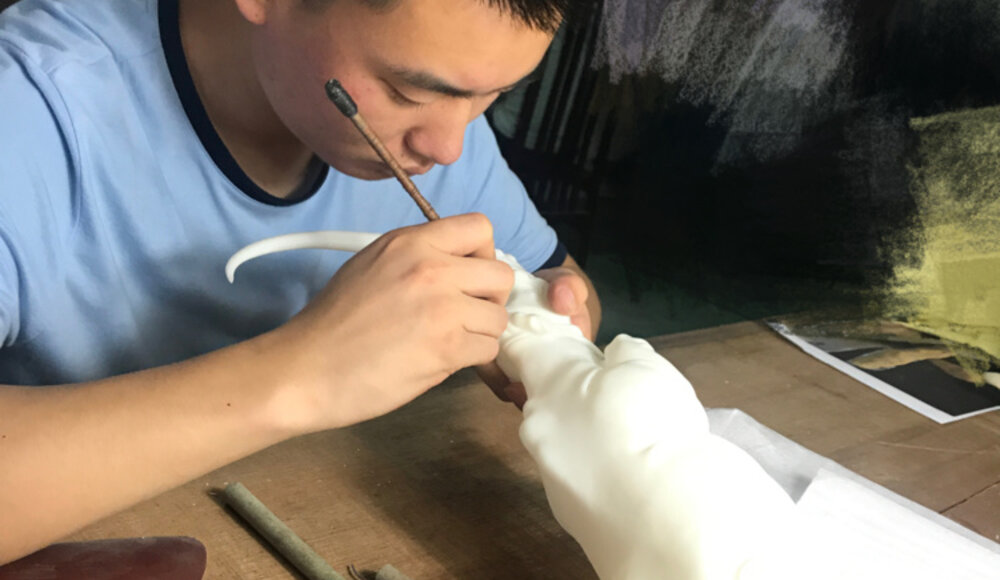



 Olimpia Gaia Martinelli
Olimpia Gaia Martinelli
